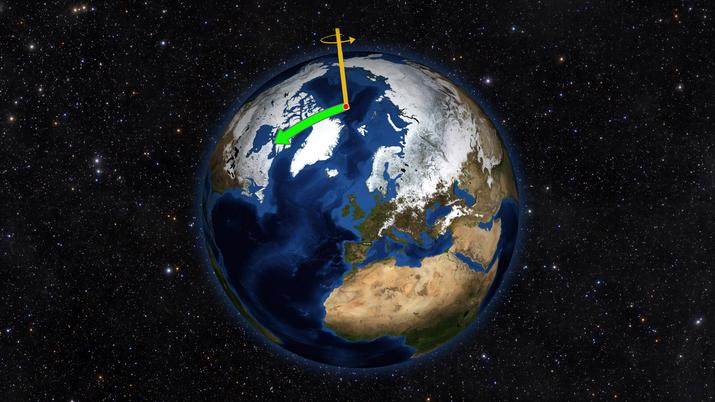
As you probably know, the planet Earth, like the rest of the planets in the solar system, revolve around a star that we know as the Sun. This movement of our planet is known as translation and the Earth takes time to make a complete turn around the Sun one calendar year. Now, does the Earth rotate perpendicular to its orbit around the Sun? The answer is no and we are going to explain what science says about this.
This movement, known as rotation, is what the Earth does on its axis, which is imaginary. The Earth takes approximately 24 hours to make a complete turn on itself, although as we will see below, this turn does not occur perpendicular to the orbit that the planet makes around the Sun.
Earth’s axis tilted
As we say, this movement that the Earth makes on itself is known as rotation movement, and thanks to this movement it is the reason why there are days, nights and time differences throughout the planet. This is not unique to our planet, as all known planets have a similar motion on themselves.
So what is the reason for our planet’s axial tilt? There are many scientific theories about it that do not agree with each other. The most widespread theory defends that the tilt of 23.5 degrees that the Earth has is due to the collision of some huge celestial bodies with the surface of the planet, causing a great impact that caused this axis to tilt with the angle that we have cited above. It may sound like a plot from a space series, but the debris released by this huge collision coalesced together and formed the satellite we know as the Moon.

The existence of this tilt is key to life as we know it. When the northern hemisphere is tilted more directly towards the Sun it is receiving much more solar energy than the other hemisphere, which makes the days much longer and much hotter. In other words, this will make it summer in the northern hemisphere and winter in the southern hemisphere. The tilt of the planet does not change at any time, but since the Earth also moves with the movement of translation around the Sun, this will cause the seasons to change throughout the year.
As we have said before, the rest of the planets in the solar system also have an inclination, but this will be different from that of the Earth in all cases, just as the time it will take for them to complete a complete revolution on themselves will also be different. (and around the sun). Venus, for example, has an inclination of 177.4 degrees, and it takes just over 243 days to rotate around itself. However, Mars has an axis very similar to our planet (it is 25.2), and it takes only 1 day and 36 minutes to turn around on itself.
If this tilt were greater than what we have on Earth, the difference between the seasons would be even more noticeable. If, for example, planet Earth had an axis tilted 90 degrees, what would happen is that each hemisphere would be cold for half the year and hot for the other half. The same thing happens in Uranus, which has an inclination of 98 degrees. However, this planet takes much longer to go around the Sun, so these conditions would last much longer than on Earth.